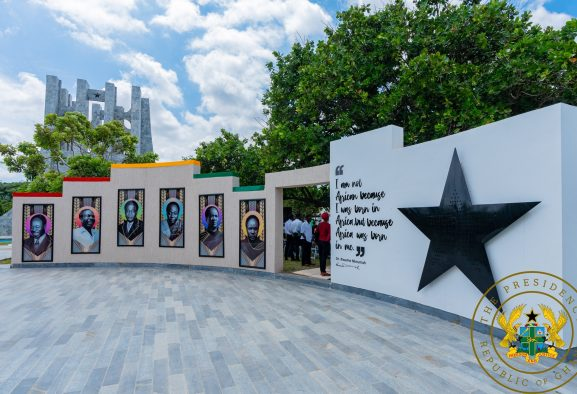Architectural Splendors: Exploring the Diverse Landmarks of Ghana

Ghana, often called the “Gateway to West Africa,” is a country rich in history, culture, and architectural heritage. From the bustling streets of Accra to the serene landscapes of Kumasi, Ghana is home to a diverse array of architectural landmarks that reflect its vibrant past and dynamic present. In this blog post, we’ll take you on a virtual tour of some of the most captivating architectural splendors that this West African gem has to offer.
1. Cape Coast Castle
Our journey begins with one of Ghana’s most hauntingly significant landmarks, the Cape Coast Castle. Built by European traders in the 17th century, this fortress stands as a stark reminder of Ghana’s involvement in the transatlantic slave trade. Its architecture merges European and African influences, with imposing stone walls contrasting against the beauty of the surrounding coastline. Today, the castle has been converted into a museum and UNESCO World Heritage Site, offering visitors a somber yet essential look into history.
2. Kwame Nkrumah Mausoleum
Moving on to Accra, the capital city, we encounter the Kwame Nkrumah Mausoleum, a tribute to Ghana’s first president and a pivotal figure in the country’s struggle for independence. This modernist structure blends African symbolism with architectural modernism, featuring an impressive marble statue of Nkrumah and an eternal flame. The mausoleum’s design, with its sweeping arches and sleek lines, pays homage to Ghana’s journey toward self-determination.
3. Larabanga Mosque
Venturing north, we arrive at the Larabanga Mosque, a testament to Ghana’s Islamic heritage and a prime example of Sudanese-Sahelian architecture. Dating back to the 15th century, this mosque is one of the oldest in West Africa and is constructed entirely from mud and reeds. Its distinctive mosque’s design features intricately carved wooden pillars and supports, showcasing the skills of local craftsmen. The Larabanga Mosque remains a spiritual and architectural wonder to this day.
4. Ashanti Royal Palace
A trip to Ghana would be incomplete without exploring the cultural heart of the Ashanti kingdom in Kumasi. The Ashanti Royal Palace, also known as the Manhyia Palace, is a regal structure that embodies the rich traditions of the Ashanti people. The palace complex features a blend of colonial and traditional Ashanti architecture, adorned with colorful murals and motifs. Visitors can delve into the Ashanti history and culture while marveling at the grandeur of this magnificent edifice.
5. Paga Poultry Cathedral
In the Upper East Region of Ghana lies a remarkable example of unconventional architecture: the Paga Poultry Cathedral. This distinctive church draws its inspiration from the local poultry farming culture, featuring a roof that mimics the shape of a chicken’s outstretched wings. The cathedral’s design embodies a creative fusion of traditional building methods and contemporary aesthetics, making it a captivating sight and a symbol of innovation within the architectural landscape.
Conclusion
Ghana’s architectural splendors offer a kaleidoscope of history, culture, and innovation. From the solemn echoes of the Cape Coast Castle to the modernist tribute of the Kwame Nkrumah Mausoleum, each landmark weaves a unique narrative that reflects Ghana’s multifaceted identity. As you explore the diverse architectural wonders of this enchanting country, you’ll discover that Ghana’s past and present are intricately intertwined, creating a tapestry of stories waiting to be uncovered.